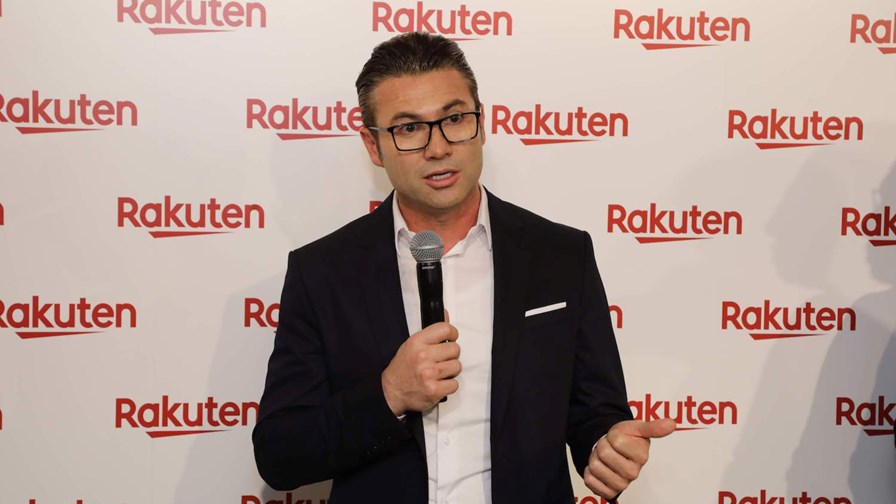
Tareq Amin, CTO, Rakuten
- The biggest buzz of the show was around Rakuten Mobile
- World’s first cloud native, fully virtualised 5G-ready network
- Scheduled to launch in Japan in October 2019
- No press conference, it just let its partners do the talking
MWC Barcelona was a somewhat sedate affair this year, if you avoid the usual noise around the handset vendors. These device OEMs generate plenty of excitement from the massed hordes of bloggers who occupy 90 per cent of the media centre for the first couple of days with their “towels on deckchairs” aversion to sharing the limited facilities, but detract from the main message of the annual industry event. This year, that message was “5G is ready and the ecosystem is moving ahead nicely towards wide scale commercialisation”. So nothing radical, no big surprises, just a reassuring sense that the industry is in decent shape and that all the necessary pieces are now in play to make the move into 5G.
Yet there was a frisson of excitement throughout the vast exhibit halls, which had nothing to do with the keynotes, media hype campaigns or flashy mega-booths. The talk of the town centred on a Japanese company that has yet to build a mobile network, let alone operate one. However, Rakuten is no ordinary company.
Established in 1997, Rakuten set out to be more than just a national e-commerce company. For starters, it made sure that English was its official corporate language, and in 2014 it entered the mobile market through an MVNO agreement with NTT Docomo. But Rakuten had bigger plans – it wanted to build its own network; one that was cloud-native from the outset and fully 5G-compliant, without the legacy network baggage that all other telcos must deal with. A truly Greenfield operator.
Perhaps its smartest move to date was hiring Tareg Amin (pictured above) as its CTO, who brought with him priceless expertise from the launch of Jio in India, which thoroughly disrupted the established mobile market when it launched. Tareq Amin was joined at MWC by Rakuten Mobile Network President Yoshi Yamada, and both made select visits to key functions of their vendor partners. Indeed, even those vendors with a minimal position in Rakuten’s ground-breaking network plan – such as Nokia – were still anxious to promote news of their involvement. There must have been over half a dozen press releases from its vendors during the show. Its list of other partners include Tech Mahindra, Altiostar, Cisco, Intel, Red Hat, Fujitsu, Ciena, NEC/Netcracker, Qualcomm, Mavenir, QCT, Allot and Viavi. Quite a few surprises in there.
TelecomTV interviewed both key executives during a event with its systems integration partner Tech Mahindra, and it was very apparent that the two companies enjoy a close relationship (they are both investors in vRAN software start-up Altiostar, whose innovative open solutions will play a key role in Rakuten’s network build-out, and they also launched a joint 5G test lab in Tokyo a couple of weeks ago).
- Video Interview with Tareq Amin, CTO, Rakuten Mobile Network and Manish Singh, Global Head for Network Cloud Solutions, Tech Mahindra
- Video Interview with Yoshi Yamada, President, Rakuten Mobile Network and C.P. Gurnani, CEO, Tech Mahindra
The launch of commercial services for Rakuten’s network is planned for October this year, and the company says it will be the world’s first cloud-native network that is fully virtualized from RAN to Core, with end-to-end automation for both network and services. Initial E2E testing was started in early February in the area around the company’s HQ in suburban Tokyo, demonstrating voice and data calls over its Viber messaging platform (which it acquired back in 2014 for $900 million).
As if a brand new cloud-native 5G-ready network wasn’t sufficiently exciting on its own, there’s another key angle to the Rakuten story. What makes it different is that the company has a strong services and applications heritage (over 70 services to date, in use by over 100 million registered members). This is not a mobile network operator that will then create and launch applications – this is an established services and apps company that is launching a mobile network. It’s an important distinction, and one which could – if successful – lead to other similar new entrants and business models in the decade ahead.
“Our vision is to build a network that innovates at the speed of software and scales at the speed of cloud,” said CTO Tareq Amin, Rakuten Mobile Network’s Chief Technology Officer. “With a keen focus on minimising complexity and disaggregating hardware and software, we are leveraging best-in-class technology from partners in Japan and around the world to provide a high quality, cost-effective service to our customers.”
The RAN will initially be 4G and Wi-Fi, with the addition of 5G planned for early 2020, subject to government licensing approval. As well as consumer mobile, Rakuten also plans to offer 5G FWA and NB-IoT.
“The fact that the start point comes from its wider e-commerce activity has shaped its attitude to technology and suppliers,” commented Chris Lewis of Lewis Insight. “Focusing on automation of processes, distribution to the ‘edge’ and leveraging the shift in the supplier community is at the heart of the strategy. Doubtless the more traditional telecoms players will be looking to learn lessons from this approach as they aim to benefit from technological and ecosystem dynamics.”
Email Newsletters
Sign up to receive TelecomTV's top news and videos, plus exclusive subscriber-only content direct to your inbox.




